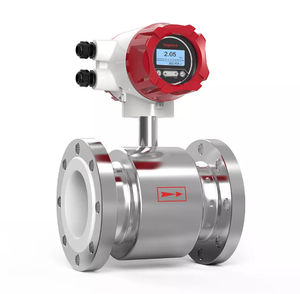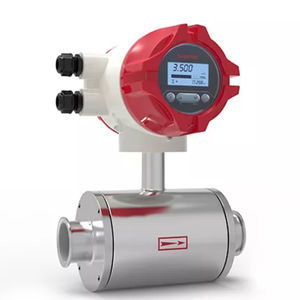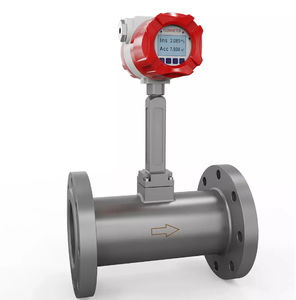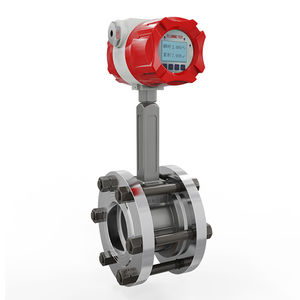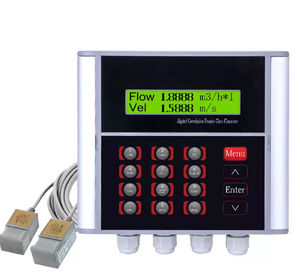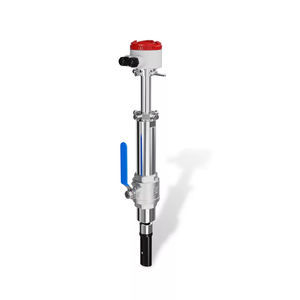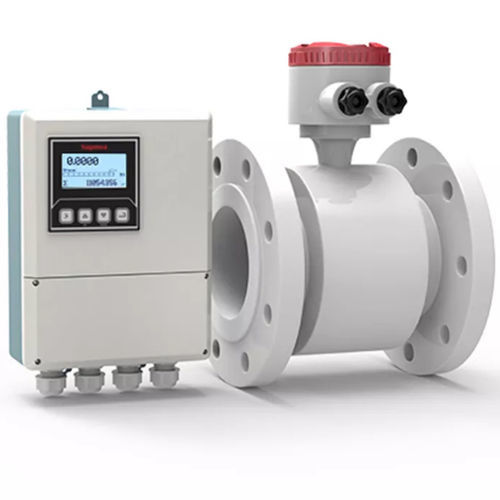

- Company
- Products
- Catalogs
- News & Trends
- Exhibitions
Electromagnetic flowmeter SUP-LDGRfor waterDN15 - 1/2"stainless steel



Add to favorites
Compare this product
Characteristics
- Technology
- electromagnetic
- Fluid
- for water
- Pipe diameter
- DN15 - 1/2"
- Material
- stainless steel, PTFE, PFA
- Supply voltage
- 220VAC, 240 VAC
- Protection level
- IP65, IP68
- Applications
- industrial, HVAC
- Other characteristics
- high-temperature, with indicator
- Process temperature
Max.: 180 °C
(356 °F)Min.: -25 °C
(-13 °F)- Process pressure
1.6 MPa
- Precision
2 %
Description
Supmea electromagnetic BTU meters accurately measure the thermal energy consumed by chilled water in British thermal units (BTU), which is a basic indicator for measuring thermal energy in commercial and residential buildings. BTU meters are usually used in commercial and industrial as well as office buildings for chilled water systems, HVAC, heating systems, etc.
Principle
SUP-LDGR electromagnetic BTU meter(Heat meter) operating principle: Hot (cold) water supplied by a heat source flows into a heat exchange system at a high (low) temperature(a radiator, heat exchanger, or complex system consisting of them),Outflow at low (high) temperature, in which heat is released or absorbed to the user through heat exchange (note: this process includes energy exchange between heating system and cooling system).When water flow through the heat exchange system, according to the flow sensor of flow and matching the temperature of the sensor is given for the return water temperature, and flow through time, through the calculation of the calculator and display the system heat release or absorption.
Q = ∫(τ0→τ1) qm × Δh ×dτ =∫(τ0→τ1) ρ×qv×∆h ×dτ
Q :Heat released or absorbed by the system,JorkWh;
qm:Mass flow of water through a heat meter,kg/h;
qv:Volume flow of water through the heat meter,m3/h;
ρ:The density of water flowing through the heat meter,kg/ m3;
∆h:The difference in enthalpy between inlet and outlet temperatures of the heat
exchange system,J/kg;
τ:time,h.
VIDEO
Catalogs
No catalogs are available for this product.
See all of Supmea Automation‘s catalogsRelated Searches
- Flowmeter
- Liquid flowmeter
- Pressure transmitter
- Pressure gauge
- Level probe
- Analog pressure transmitter
- Liquid level probe
- Gas flowmeter
- Stainless steel flowmeter
- Waterproof flowmeter
- Pressure probe
- Industrial flowmeter
- Relative pressure transmitter
- Membrane pressure transmitter
- Waterproof pressure transmitter
- Stainless steel pressure transmitter
- Analog level probe
- Precision flowmeter
- Compact flowmeter
- Level transmitter
*Prices are pre-tax. They exclude delivery charges and customs duties and do not include additional charges for installation or activation options. Prices are indicative only and may vary by country, with changes to the cost of raw materials and exchange rates.



